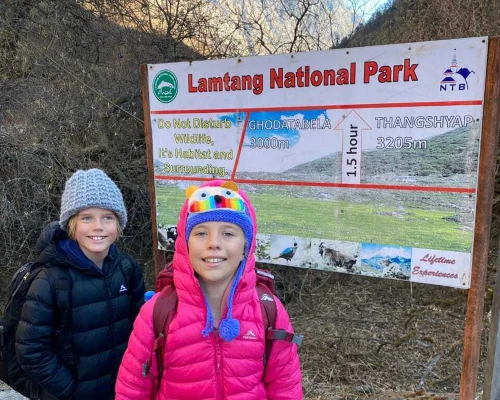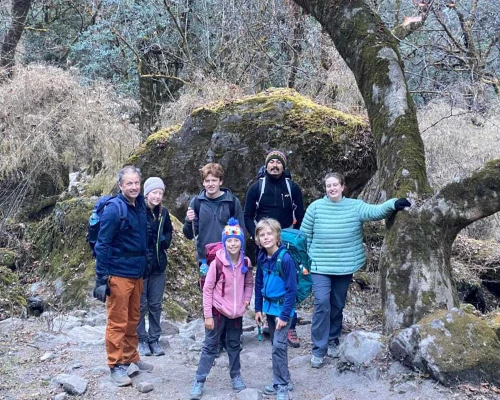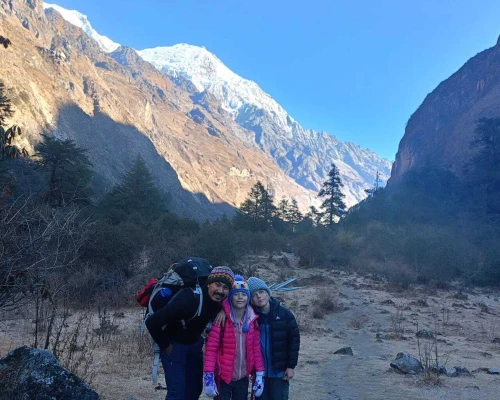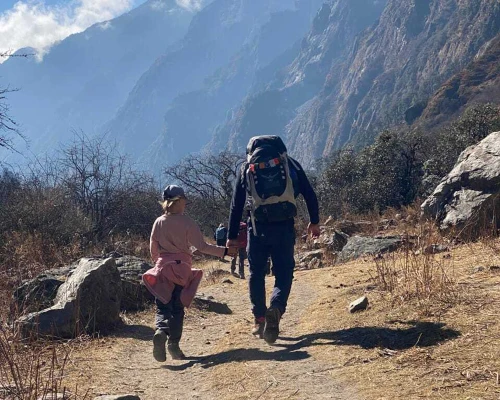Accommodation and Food
During the Langtang Valley Trek, trekkers can find various accommodations and food options. Numerous tea houses and lodges offer basic yet comfortable accommodations along the trekking route. These places typically provide rooms with simple beds, blankets, and sometimes shared bathrooms. Guesthouses are available for trekkers in villages like Lama Hotel, Ghoretabela, Kyanjin Gompa, and others. However, these guesthouses offer more comfort than tea houses, providing private or shared rooms with blankets and sometimes attached bathrooms. Moreover, designated camping sites are available in certain areas along the trekking route for those who prefer camping.
Teahouses, lodges, and guesthouses typically offer a variety of local and international dishes. The menus often include traditional Nepali cuisine like dal bhat (rice with lentil soup), momos (dumplings), noodles, and thukpa (noodle soup), providing trekkers with hearty meals to refuel after trekking. Vegetarian and non-vegetarian choices are usually available to accommodate different dietary preferences. In addition, they also serve butter tea, coffee, hot chocolate, and soft drinks.
Common FAQS
What is the Best Time for Langtang Valley Trek 6 Days?
Langtang Valley Trek 6 Days presents unique experiences and characteristics throughout the four seasons:
During spring, the Langtang Valley comes alive with vibrant colors as flowers bloom across the landscape. Rhododendrons, magnolias, and wildflowers paint the trails red, pink, and white. The weather becomes milder with pleasant temperatures and clear skies. Trekkers see the breathtaking views of snow-capped peaks against the backdrop of blooming floras. Overall, it creates a pcturesque and enchanting trekking experience.
The summer months bring the monsoon season to the Langtang Valley. While the valley is lush and green, this period experiences heavy rainfall, which might lead to muddy and slippery trails. The monsoon season also brings occasional cloud cover, limiting mountain views. However, the valleys come to life, and the lush forest offers a unique experience for those who don't mind trekking in rainy conditions.
Autumn is the prime trekking season in the Langtang Valley. After the monsoon season, the Langtang Valley has clear skies, stable weather, and excellent visibility. The landscape remains lush from the monsoon rains, but the trails dry up, making trekking comfortable and enjoyable. Trekkers are rewarded with stunning panoramic views of the Himalayan peaks against the colorful landscapes. Thus, autumn is a popular time to visit.
Winter brings colder temperatures and occasional snowfall to the Langtang Valley. The trekking gets more challenging as the trails might be covered in snow at higher elevations. However, the valley has a unique beauty with snow-capped mountains and frozen landscapes. The clear skies offer excellent visibility of the surrounding peaks, and the quieter trails provide a serene and peaceful trekking experience for those prepared for colder conditions.
Each season in the Langtang Valley trek offers its own charm and experiences. Whether it's the colorful blooms of spring, the lushness of monsoon, the stunning vistas of autumn, or the serene snowy winter landscapes, all have their own magic. Thus, it provides trekkers with diverse trekking experiences throughout the year.
How Difficult is Langtang Valley Trek 6 Days?
The Langtang Valley trek presents a moderate challenge suitable for novice and pro trekkers. for this trek, you dot not need special training but you must have to physically fit your body. if you have any physical issues please let us know before starting the trek. if you are not able to complete this Langtang Valley trek within 6 days. you can easily able to extend your extra day. so feel easy and be ready to start the adventure with us. The trail has varied terrain, including gradual ascents, descents, and occasional steep sections. That's why it doesn't require technical climbing skills but reasonable fitness. Nevertheless, the altitude ascends gradually, reaching over 3,800 meters at Kyanjin Gompa, which might raise altitude-related issues. Therefore, integrating acclimatization is a must to avoid accidents. Well-defined trails traverse forests, riversides, and open areas. However, some sections may be rocky or narrow, which demands careful navigation. While prior experience isn't mandatory, physical fitness and appropriate gear enhance the experience. Finally, guides and porters offer valuable support and insights throughout the trek.
What are the alternatives for Langtang Valley Trek?
If you have completed your Langtang Trek, you can have Gosaikunda Trek or Helambu Trek. These treks are short, adventure-filled journeys that pass through untouched regions of Langtang.







 based on 1 review
based on 1 review